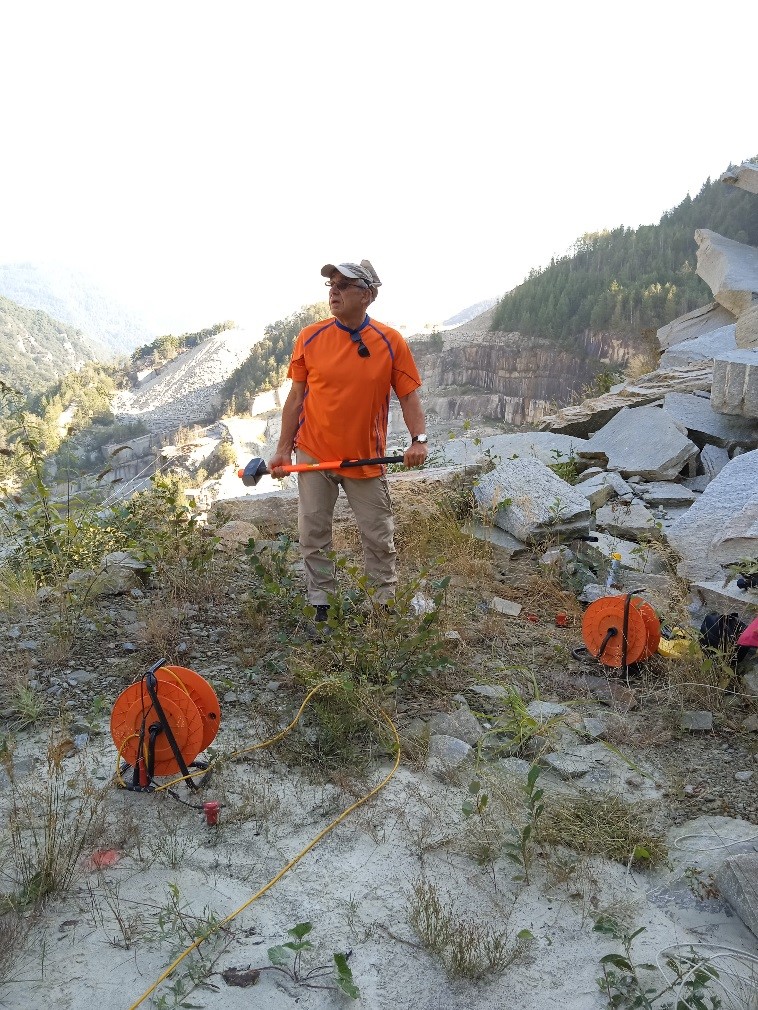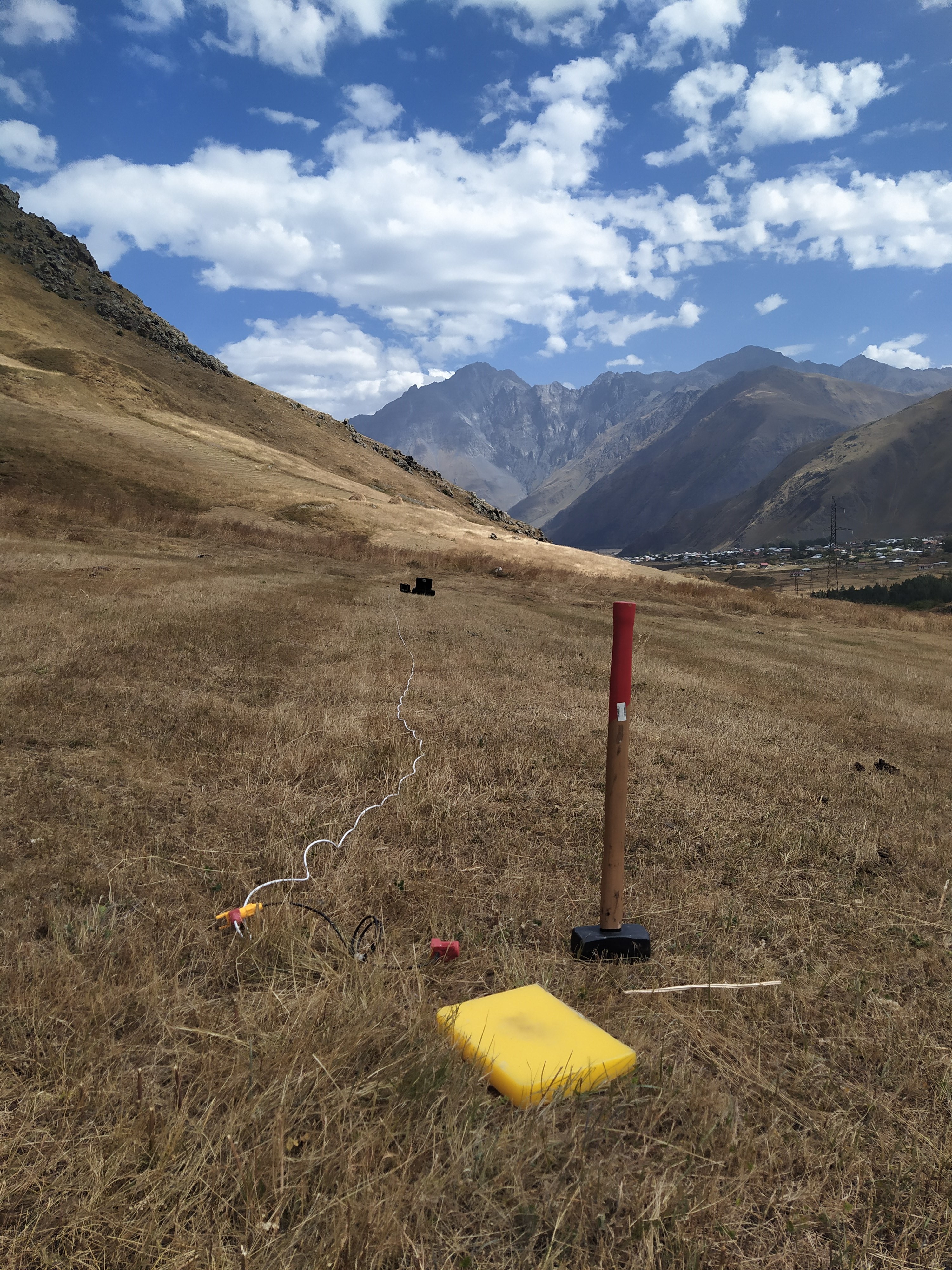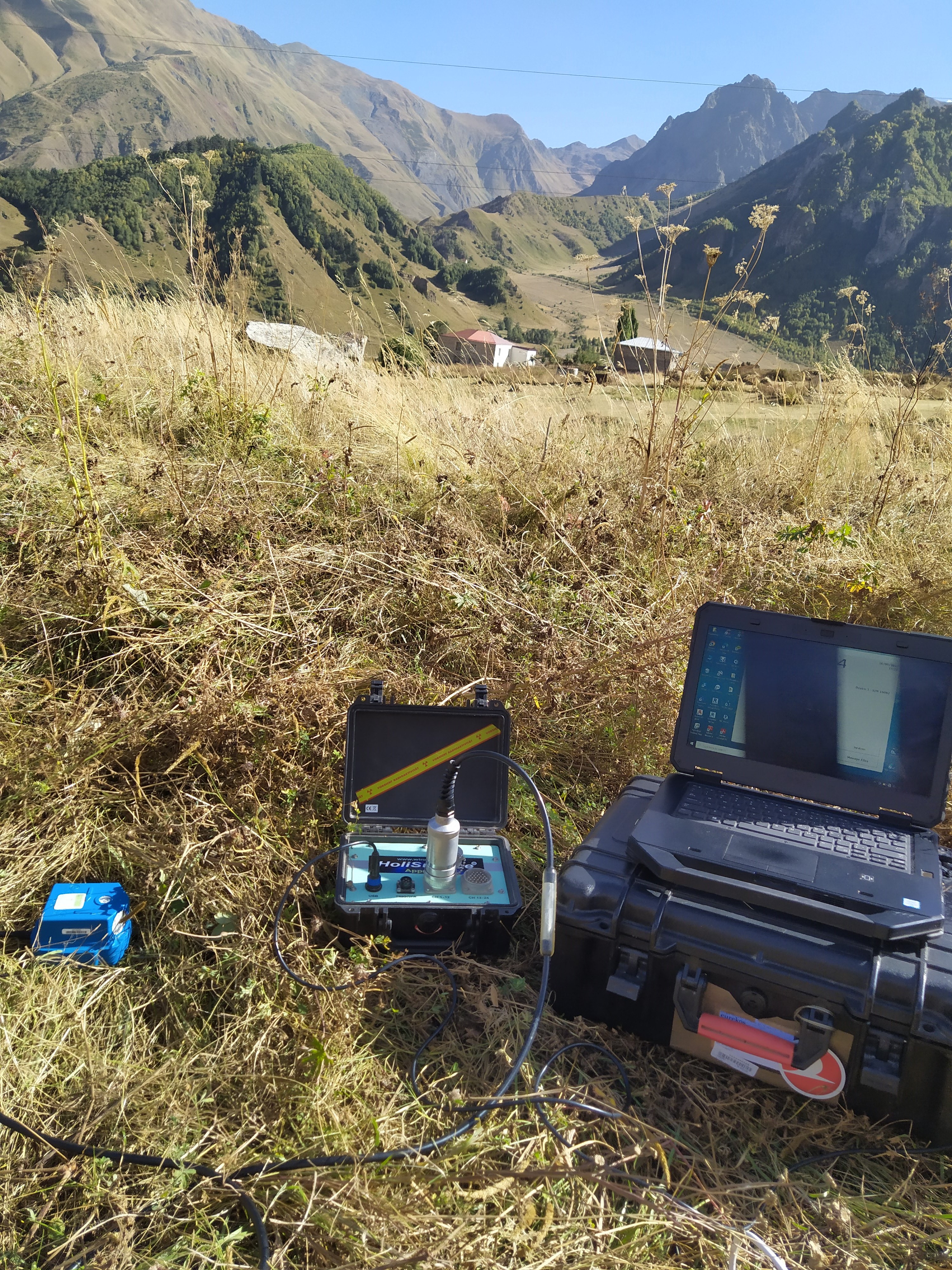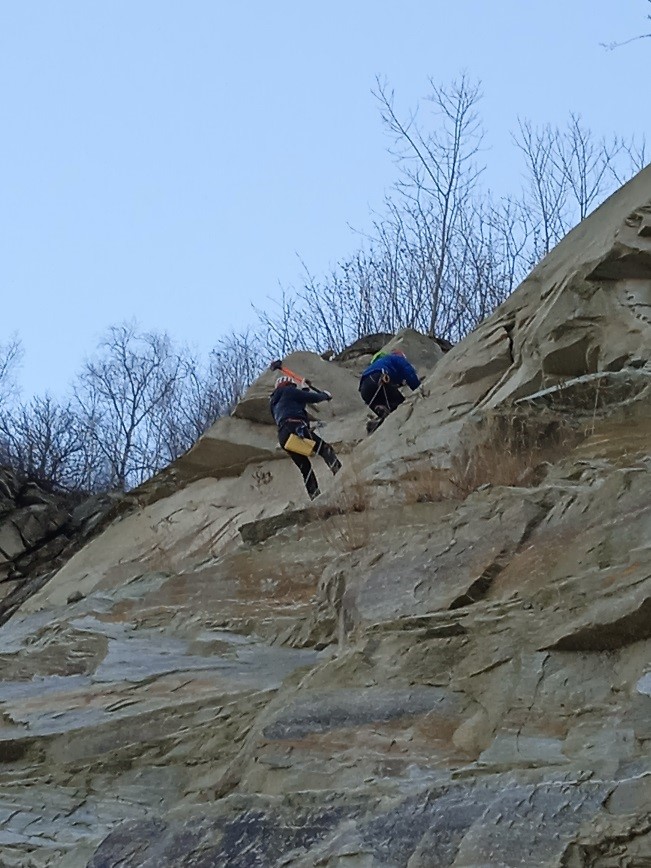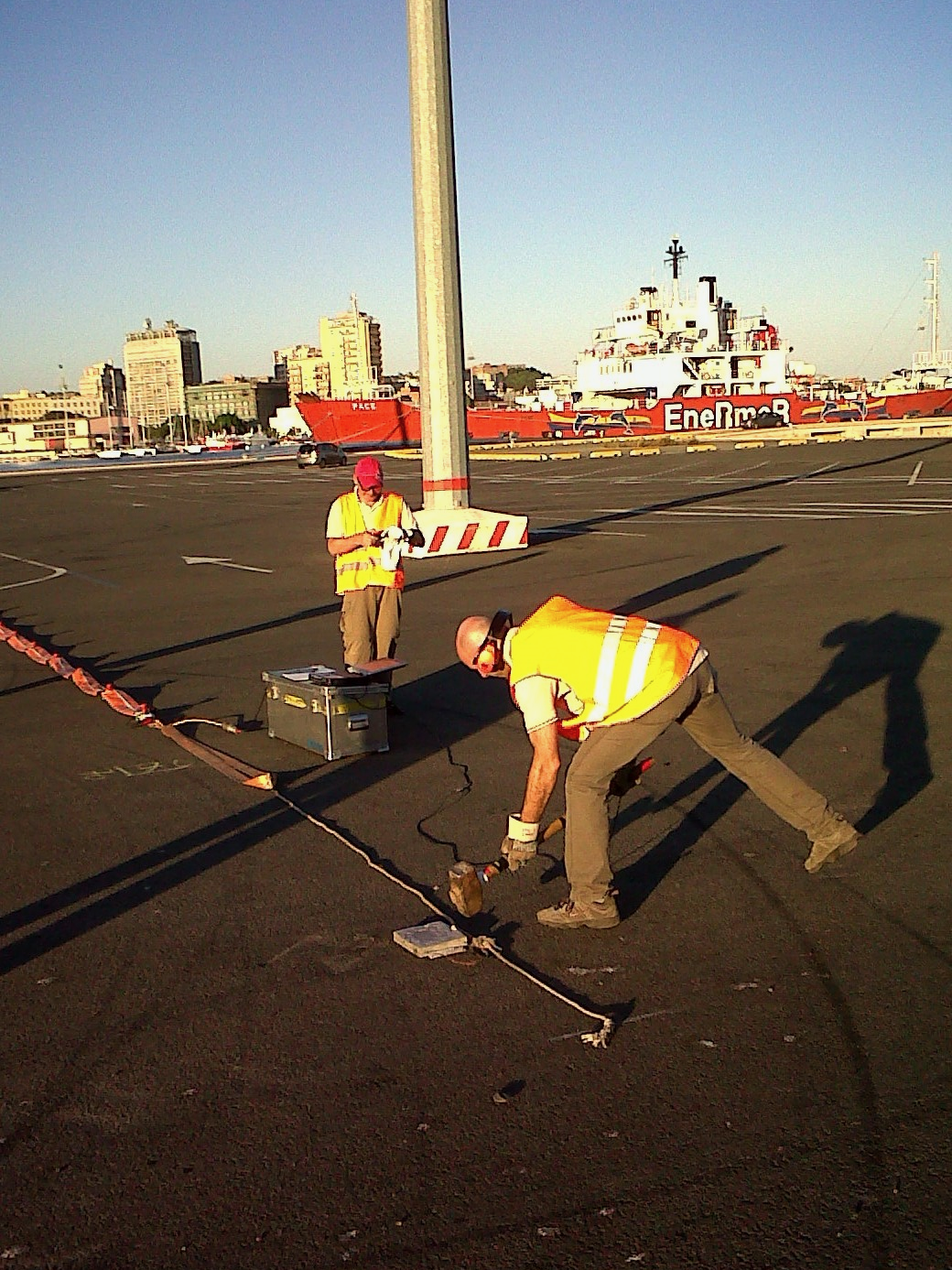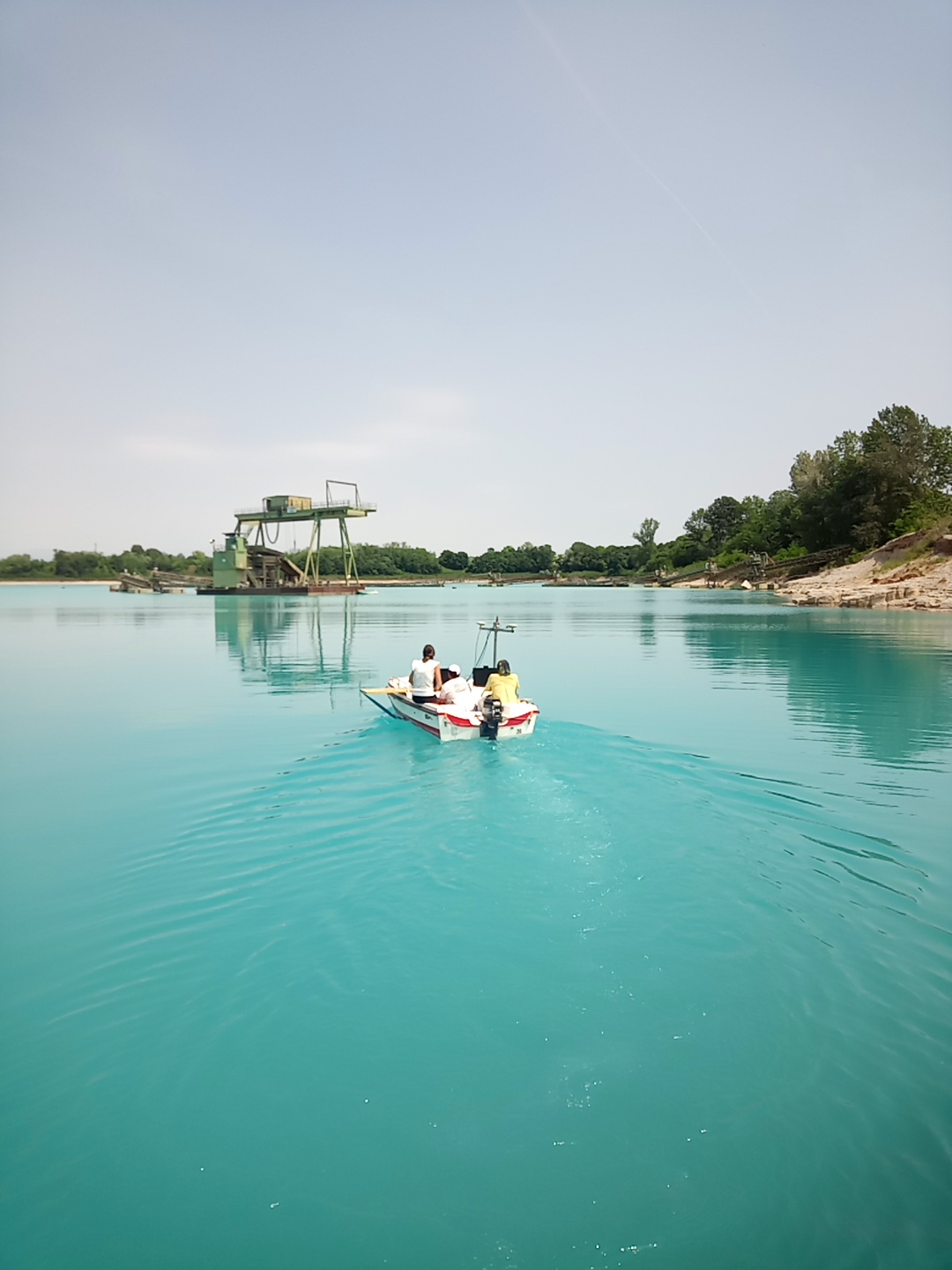Indagine sismica per la definizione della continuità della massa rocciosa -
Bagnolo Piemonte (CN)
SEISMIC METHODOLOGY
Seismic methods are based on the processing and analysis of recordings of natural (passive seismic) or induced (active seismic) elastic
waves that have propagated underground. The models developed through the reconstruction of the propagation speeds of the different types
of waves allow us to model the surfaces of elastic discontinuity and proceed with the reconstruction of the geological structures,
define the geometries and the base of the landslide bodies, estimate the state of fracturing of masses rocks, the state of conservation
of stone materials and define the dynamic elastic modules of the materials.
The main methods are:
All steps during data processing, inversion and interpretation are performed by a skilled technician because automatic data processing could lead to a solution (model) which is mathematically more fitting but very often not representative of the seismo-stratigraphic conditions of the subsoil.
Data acquisition is obtained by a source of energy, in general a sledgehammer or a small explosion device, and a chain of geophones. Each geophone records the arrival of the signal and by a dedicated routine it is possible to reconstruct the trace of the signal from the moment of energization to the arrival time at geophone and even for a selected longer time. These traces are plotted in special format and constitute the travel times or intervals of time elapsed from energization and recording of first arrival or “first break” for each geophone. The result is a section with distribution of the seismic velocities of the subsoil.
The shear-wave velocity of the ground in related to important elastic properties of the subsoil. Another advantage is that the Vs is related to the solid component of the soil, whereas the Vp (compressional waves) are strongly influenced by the water content.
The passive microtremors acquisition provides information to greater depths. This method consists to 20 minutes (or more) registration of seismic noise by a three-component geophone. This provides information about the ambient noise and permits to improve the definition of Vs profile by the joint inversion of the H/V Spectral Ratio and the dispersion curves.
M.A.S.W. (Multichannel Analysis of Surface Waves)
The scientific studies and signal analysis developed in the recent years pointed out that the largest part of the energy generated in the energization point propagates as S waves. Due to the easier data processing and analysis of P waves, attention has been concentrated mostly on this type of waves leaving S waves at the role of undesired noise and signals having poor significance. Recent studies and advancements in signal processing methodologies permitted to develop a mathematical model for the processing of S waves too with the goal to take advantages of their high energy of propagation. The study of S waves has permitted to understand that wave propagation is characterized by dispersion (the velocity of propagation is variable according to frequency) that is a characteristic signature of this type of waves; modern data processing of S waves permits to characterize this behavior by a function, called dispersion curve, able to associate each frequency to a typical velocity of propagation.All steps during data processing, inversion and interpretation are performed by a skilled technician because automatic data processing could lead to a solution (model) which is mathematically more fitting but very often not representative of the seismo-stratigraphic conditions of the subsoil.
SEISMIC REFRACTION
Seismic refraction methodology permits to define the seismo-stratigraphy of the subsoil by means of the analysis of the velocity of propagation of P (Pressure) waves in the subsoil.Data acquisition is obtained by a source of energy, in general a sledgehammer or a small explosion device, and a chain of geophones. Each geophone records the arrival of the signal and by a dedicated routine it is possible to reconstruct the trace of the signal from the moment of energization to the arrival time at geophone and even for a selected longer time. These traces are plotted in special format and constitute the travel times or intervals of time elapsed from energization and recording of first arrival or “first break” for each geophone. The result is a section with distribution of the seismic velocities of the subsoil.
DETERMINATION OF VS (SHEAR WAVES VELOCITY) AND GEOMECHANICAL PARAMETERS OF THE SUBSOIL
Eurekos uses passive and active seismic measurements, using a three-component geophone in accordance to WinMASW® method, to assess natural background of the site and to determine the Vs for the determination of the geo-mechanical parameters of the subsoil. The key feature of WinMASW® is represented by the possibility of jointly analysing different active and passive data. This allows to overcome the problems related to non-uniqueness of the solution and all the possible ambiguities in the data interpretation and allows to analyse seismic data in order to achieve the vertical profile of Vs (shear-wave velocity).The shear-wave velocity of the ground in related to important elastic properties of the subsoil. Another advantage is that the Vs is related to the solid component of the soil, whereas the Vp (compressional waves) are strongly influenced by the water content.
The passive microtremors acquisition provides information to greater depths. This method consists to 20 minutes (or more) registration of seismic noise by a three-component geophone. This provides information about the ambient noise and permits to improve the definition of Vs profile by the joint inversion of the H/V Spectral Ratio and the dispersion curves.
